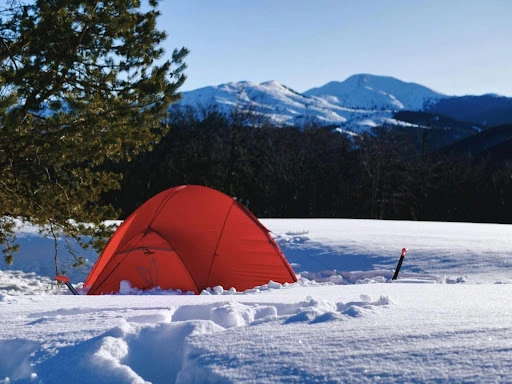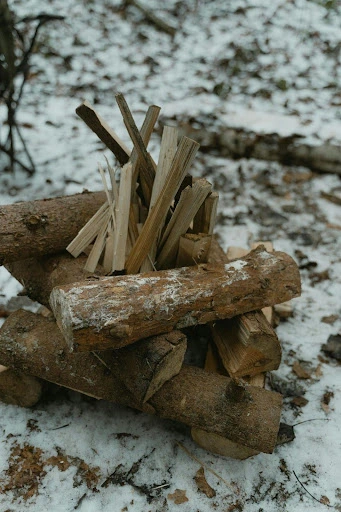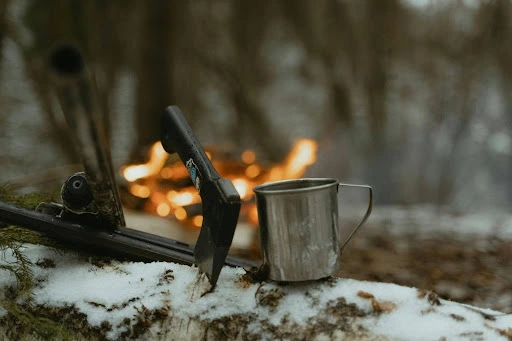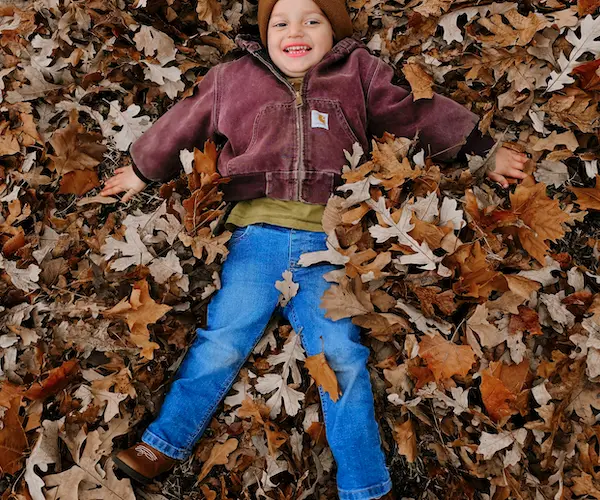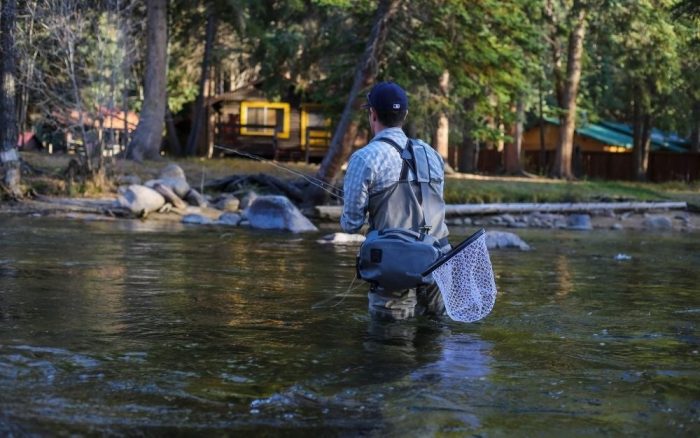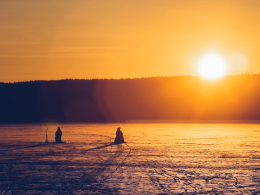Winter camping combines the serenity of snow-covered landscapes with the thrills of outdoor adventure. However, for even the most seasoned campers, the idea of venturing into the wild during freezing temperatures can spark understandable fears. Concerns like hypothermia, getting lost, or encountering wildlife are common but manageable. With the right preparation, knowledge, and mindset, these fears can transform into empowering experiences.
Table of Contents
What Makes You Afraid?
To address your fears you first have to realise what those fears are.
When I first started winter camping, the thought of being stranded in the woods or waking up in freezing conditions was always on my mind. What if my campsite became unreachable? What if my sleeping bag wasn’t warm enough? These fears were valid but manageable once broken down.
Over time, I realized preparation was my greatest asset. I always bring extra supplies for emergencies, whether it’s fire-starting materials, food, or clothing. Knowing I could create warmth by lighting a fire or moving my body kept the fear of freezing from overwhelming me. Getting a wood stove has helped alleviate feelings of not being able to stay warm.
Similarly, staying connected is reassuring. Having a backup way to communicate, whether it’s a charged phone or a GPS beacon, bridges the gap between uncertainty and security. In my case, having a system like Starlink has kept me connected in places where cell phones cannot reach me.
Common Fears When It Comes to Winter Camping
Not everyone will have the same fears but there are a few common ones when it comes to winter camping that we can address.
Hypothermia
Hypothermia—a condition where your body loses heat faster than it can generate it—is one of winter camping’s most significant dangers. Identifying this risk and having strategies in place to stay warm is key to a safe and rewarding experience.
Signs and Symptoms
Recognizing early symptoms of hypothermia can prevent it from escalating. Initial signs include uncontrollable shivering, slurred speech, and clumsy movements. If left untreated, it can lead to confusion, exhaustion, and, in severe cases, unconsciousness.
Strategies for Staying Warm
Staying warm begins with proper gear. Layering is essential. Start with a moisture-wicking base layer to keep sweat off your skin. Add an insulating middle layer like fleece or down, and finish with a waterproof and windproof outer shell. Always pack extra layers, including gloves, socks, and a hat. Keep critical areas like your head and feet especially protected, as these areas lose heat rapidly.
Bring a reliable sleeping bag rated for the temperatures you’ll face. Sleeping pads also play a crucial role by creating insulation between you and the cold ground. If you wake shivering in the middle of the night, don’t panic—as I’ve learned firsthand, some movement or starting a fire can quickly warm you up.
Stay hydrated and well-fed. Your body generates heat when it has fuel, so snack on high-calorie foods throughout the day and before bedtime. Avoid alcohol, as it can lower your body temperature. Throw a hot water bottle into your sleeping bag before bed – all of these things will make your experience less frightening.
Getting Lost
The fear of getting lost can feel heightened when trails disappear under snow and the landscape looks the same in every direction. But with proper tools, planning, and communication, you can confidently find your way.
Importance of Navigation Tools
Carry a map, compass, and GPS device. Apps like Gaia GPS or AllTrails are excellent for pre-planning routes and downloading offline maps for backup. While technology is helpful, a compass and map are essential. Know how to use them before heading out—completing a navigation class can build confidence and teach invaluable skills.
Pre-Planning and Communication Strategies
Always share your travel plans with someone before heading out. Specify your route, expected return time, and backup plans. Stick to designated trails when possible, as they’re easier to follow in winter terrain.
Mark key landmarks or trailheads if snow begins covering familiar paths. Bright-colored flags or ribbons can guide your way back, a simple yet effective safety measure.
One strategy I follow during my trips is bringing a means of communication. Whether it’s a satellite phone or a beacon device like a Garmin inReach, this tool ensures that help is just a message away.
Wildlife Encounters
Winter wildlife sightings may be less frequent than in warmer seasons, but the idea of an unexpected encounter can still be unsettling. Fear often stems from uncertainty about animal behavior or how to prevent encounters.
Understanding Wildlife Behavior in Winter
Animals such as bears tend to go into torpor in colder months, reducing the likelihood of danger. However, animals like foxes, wolves, or elk remain active during winter. The good news is that they are most likely not interested in you (maybe any food you have) but the scent of burning wood and human activity still pushes them away.
Proper Food Storage and Campsite Selection
The best way to avoid unwanted animal interactions is proper food storage. Use scent-proof bags and store food away from your camp—hanging food in a bear-proof bag or using a bear canister is best. Clean up your campsite thoroughly, ensuring no scraps are left behind.
Selecting the right campsite is equally important. Avoid trails or water sources likely used by animals, and set up in open spaces where you can see your surroundings.
Final Thoughts
Fear is natural and unavoidable when stepping into the unknown, especially in the untamed beauty of winter camping. Hypothermia, getting lost, and wildlife encounters are real risks, but they’re not insurmountable. Armed with the right tools, knowledge, and mental preparation, these fears transform into opportunities to grow and explore.

